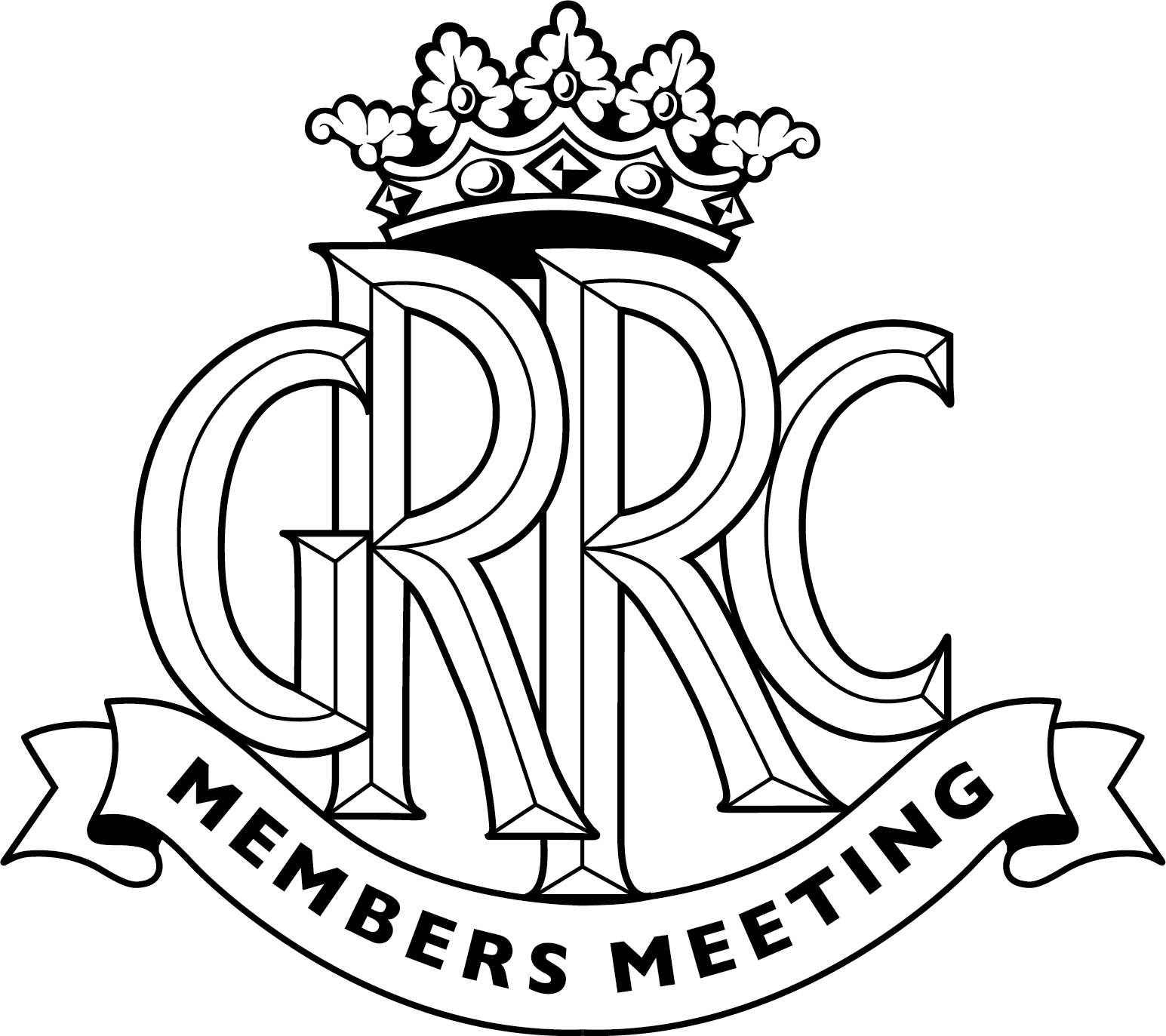Doug Nye – How British Motorsport Began
 Doug Nye
Doug Nye
Way back in the early light of the Goodwood Motor Circuit’s long story, only the inaugural meeting had been run here – in September 1948 – it was immediately apparent that not only had it been a tremendous success, but that an eager enthusiast public really was out there thirsting for more.

As is often the way of these things, I was rummaging about in the library this morning hunting for something entirely different – in fact some information upon the prototype new Aston Martins to run in the first post-war Le Mans 24-Hour race, when I happened across something completely different – but, for me (and hopefully for us) at least equally interesting.
In ‘The Autocar’ magazine of February 18, 1949, former ‘Bentley Boy’ Sammy Davis – writing under his familiar pseudonym ‘Casque’ – led his weekly column on ‘The Sport’ with the headline ‘Major Improvements at Goodwood’.
His story read as follows: “The B.A.R.C. (and how hard it is going to be to shake off the J.C.C. habit*) have not been letting the grass grow under their feet at Goodwood this winter. Large grandstands are in course of being erected opposite the starting area, in the main enclosures, with a further stand about two-thirds of the way along the north straight, i.e. that leading to the final corner, and yet another on the first corner of all. Incidentally, to facilitate identification the various sections and hazards of the circuit have been named. For example, the straight immediately beyond the start and finish line becomes the Finishing Straight, the first corner is Madgwick Corner, the left-hand sweep at the east side of the course is St Mary’s Corner, this being followed by the right-angled Lavant Corner, after which comes the Lavant (North) Straight, while the final turn – a little confusingly in view of Silverstone – is Woodcote Corner.”
The story was accompanied by this map:
*Now for a modern audience Sammy’s reference to the BARC and the JCC habit perhaps needs some explanation. The British Automobile Racing Club was created in the late 1940s as an amalgamation of the pre-war Brooklands Automobile Racing Club – left without a home and without a cause since Brooklands Motor Course was no more, lost to the ravages of wartime development – and the Junior Car Club which had shown itself to be so enterprising and original in its pre-war racing outlook. Sammy Davis had been an enthusiastic member and participant in both Clubs’ activities, as indeed had Freddie Richmond himself – the Duke of Richmond & Gordon and of course owner and creator of the Goodwood Motor Circuit itself.
One of the prime reasons why Freddie’s Westhampnett aerodrome site had been adapted to motor racing use under the name of the Goodwood estate was that mainland Britain had lost all three of its pre-war motor racing circuits to wartime ravages. Donington Park up near Derby had become the Army’s Breedon Depot – the military’s largest motor transport service and dump location. The Crystal Palace circuit in its south London park was choked with vegetation, the pre-war circuit’s surface there had become frost-heaved, broken-up and badly neglected. And as for Brooklands – well – our country’s most celebrated and famous venue had had Vickers Aircraft factory and workshop buildings sunk into its former high-speed bankings, and its always fragile and vulnerable concrete surface had been cracked, disrupted and in many places reduced to pot-holed devastation by six years’ of combined hard use and zero maintenance.
The background to the BARC in its original Brooklands form extended way back to Brooklands itself having been a complete innovation when opened in 1907. It was natural that horse race practices should have been applied to early motor races there. It was the only known model. In the Weybridge track’s formative years the drivers wore owners’ colours for identification, and races were started by Hugh Owen who had been starter for the Jockey Club. The Brooklands Automobile Racing Club administered the new sport from its offices at Carlton House in London.

Freddie March (left on shooting stick) talking with Peter Whitehead - trousers tucked in socks - whose Ferrari 125 sits there on the 1950 Jersey Road Race front row.
The ageing track took a battering during World War 1 when the RFC and RAF largely too it over and their heavy lorries played havoc with sections of the track surface, while Vickers, Sopwith and Bleriot all manufactured aircraft there. Indeed, Brooklands ended up being of far more significance to the progress of British aviation, than to the progress of British motor racing… but one should only whisper as much…
The ambitious new Junior Car Club then emerged in the early 1920s, organizing Britain’s first long-distance mainland-circuit motor race in 1921 – the 200-Miles for up-to-1,500cc cars. The event created tremendous interest and would be repeated in 1922-23-24. In 1925 it was the creative JCC which decided to bring “a road racing atmosphere” to bland Brooklands by introducing artificial corners. This idea proved very popular and was mimicked by other organisers.
By the 1930s the BARC had been transferred from London to the Clubhouse with Kenneth Skinner its Secretary. The JCC ran a production car race in 1926 and a Sporting Car race in 1927. The Essex MC introduced a Six-Hour Endurance Race while the JCC continued its 200 Miles event and in 1929 invented another ambitious Brooklands race in the form of the Double-Twelve contest for sports cars – two 12-Hour Heats on consecutive days, with merely an overnight break to permit the residents of Weybridge, Byfleet and St George’s Hill a peaceful night’s sleep.

Freddie Richmond – as the Earl of March – and Fairey Aviation test pilot Chris Staniland won the 1931 Double-Twelve in their MG, but the Double-Twelve had proved too expensive for the organisers and a 1,000-Mile race was substituted – the first winners being Elsie Wisdom and Joan Richmond, in a Riley Nine… that’s right, women racing drivers winning a significant event.
In 1933 the JCC again showed its power of lateral thought, launching its series of International Trophy races, which used an ingenious handicapping method by channeling the competing cars into corners of varying severity once each lap.
Freddie Richmond was President of the combined BARC/JCC ‘British ARC’ postwar, when the dearth of mainland road racing circuits led them into further lateral thought – organizing a major International motor race instead around the streets and seafront esplanade at St Helier, Jersey, in the Channel Islands, beginning in 1947. Then of course Goodwood came along… in Freddie’s backyard. The spirit of innovation, the lateral thinking, remained most evident.

'Sammy’ Davis telling the tale after he and Freddie March had co-driven their Austin Seven to victory in the 1930 BRDC 500 at Brooklands. Davis is holding his ‘casque’ crash helmet.
And, incidentally, while this ramble around news of Goodwood’s early development progresses, some readers might wonder about Sammy Davis’s pseudonym as the Sports Editor of ‘The Autocar’. In fact Sydney Charles Houghton Davis – always known as ‘Sammy’ – (born in London in 1887) had ser ved an apprenticeship at Daimler’s before taking to journalism as a career while racing a Douglas motor-cycle and Cummikar and Pilot cyclecars. S.F. Edge invited him to join his works AC team in 1921 and Sammy was up and running, later appearaing regularly in Aston Martin, Sunbeam, Alvis and Bentley cars. He also proved himself as an accomplished artist, worked in motor sport administration with various clubs and did terrific work in the furtherance of the sport. Sharing his works Bentley with Dr J.D.Benjafield he was involved in the legendary ‘White House Crash’ at Le Mans in 1927, yet extricated the car and won the great 24-Hour race.
Yes, OK, but what about his pseudonym, ‘Casque’? Well you see Sammy Davis was one of the small minority of International standard racing drivers between the wars who dared to wear a rigid crash helmet – a ‘casque’ – instead of just a linen wind cap or flying helmet. He, like Earl Howe, wore a crash hat and carried it off – both being known for their habitual race wear – whereas most of their contemporaries – and significantly nearly all of what the British press described as ‘the Continental cracks’ (like Caracciola, Chiron, Campari, Nuvolari etc) wore just soft fabric caps to “look like real men”. That’s it, wearing a rigid crash helmet ran the risk of being regarded as some kind of sissy. In fact the FIA did not make hard crash helmets compulsory until as late as 1952. Dear me – times do change, indeed…
Doug Nye
Goodwood
Brooklands







